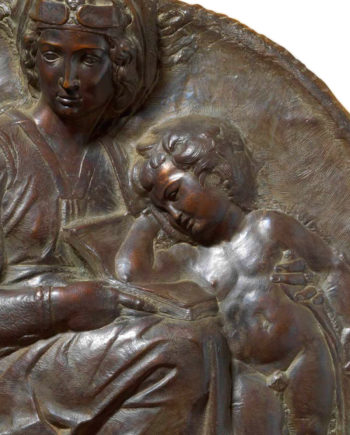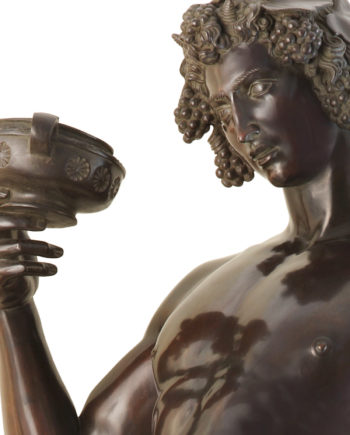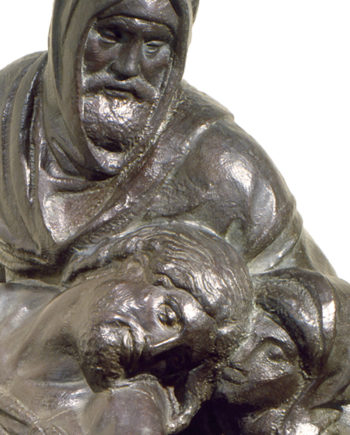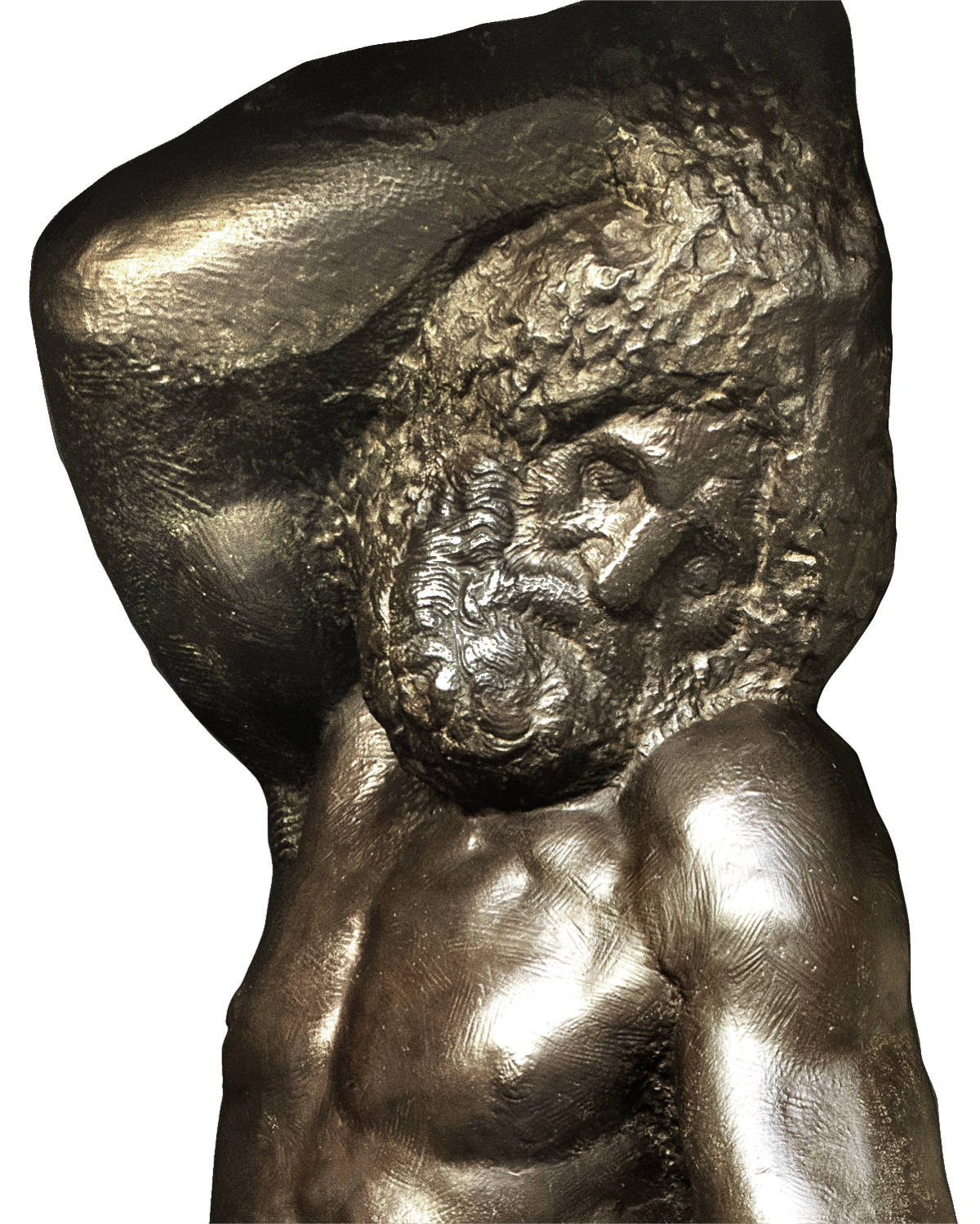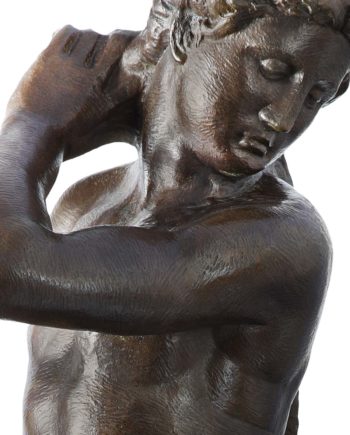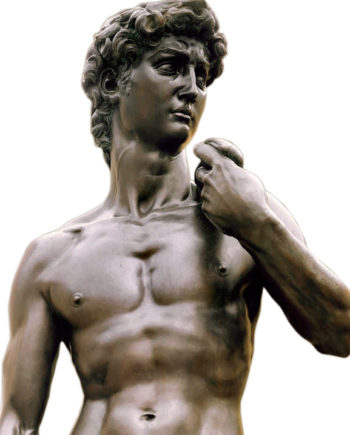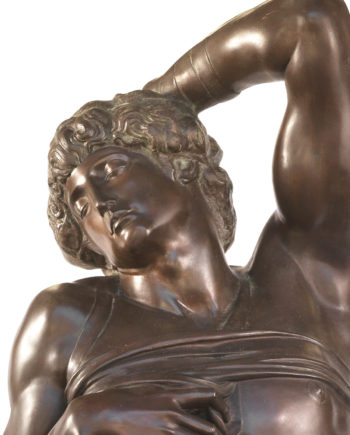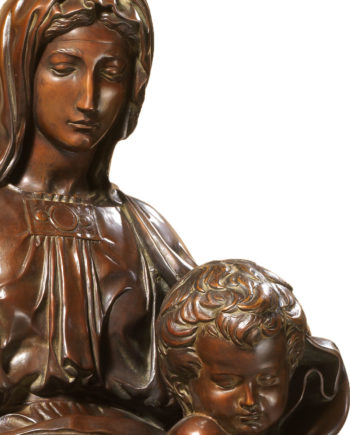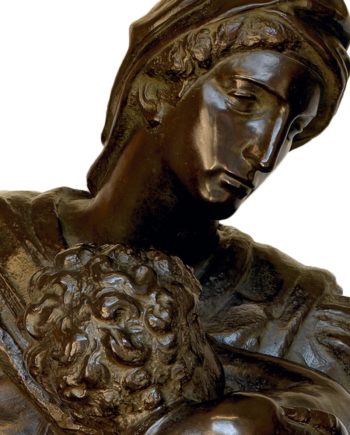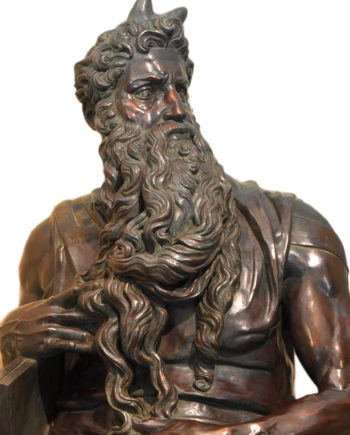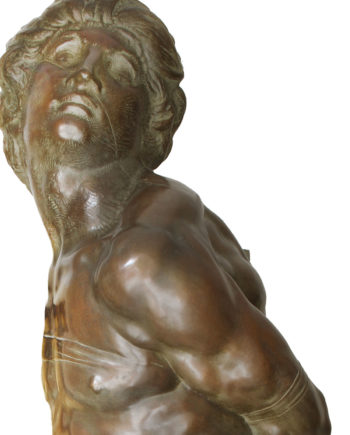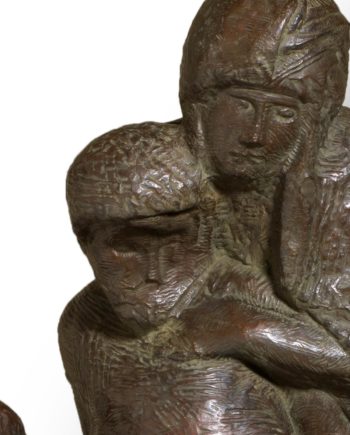Michelangelo is universally recognized as the greatest sculpture of all time. He lived for 89 years and never ceased creating: at 16 years old in 1491, he produced the “Madonna della Scala” and the “Battle of the Centaurs” (both at the Casa Buonarroti, Florence). 5 years later, in 1496, he went to Rome where he carved the “Bacchus” (Museo Nazionale del Bargello, Florence) and when only 22, he created the famous Pieta (1497-99, Saint Peter’s Rome), his only signed masterpiece.
On his return to Florence in 1501 he carved the “David”, the “Madonna of Bruges” (1503) and the two reliefs: the “Pitti Tondo”, which for the first time demonstrated his “unfinished” style, and the “Tondo Doni” (Museo Nazionale del Bargello, Florence ).
For the Cathedral of Bologna he produced the great bronze statue of Julius II (1506-8), now lost. For the monumental uncompleted tomb of Pope Julius II, Michelangelo executed a series of masterpieces: “Moses”, “Dying Slave”, “Rebellious Slave” (Louvre, Paris), ‘Young Slave”, ‘Bearded Slave’, “Atlas” and the “Awakening Slave” (Galleria dell’Accademia in Florence). During the same period, he sculpted the “Risen Christ” for the Church of Santa Maria sopra Minerva in Rome.
For the New Sacristy (Sacrestia Nuova) in the Church of San Lorenzo in Florence between 1516 and 1534, he sculpted the Medici Tombs depicting Giuliano Duke of Nemours and Lorenzo Duke of Urbino, the “Medici Madonna” and the famous four allegories of “Dawn and Dusk”and “Night and Day. Between 1550 and 1558 he executed two Pietàs: The “Bandini Pietà” (Museo dell’Opera del Duomo, Florence) where the face of Nicodemus is a self-portrait and at the age of 89, the “Rondanini Pietà Rondanini” (Castello Sforzesco, Milan), his last masterpiece. During the intervening years, incredibly, he frescoed the Sistine Chapel in the Vatican.

